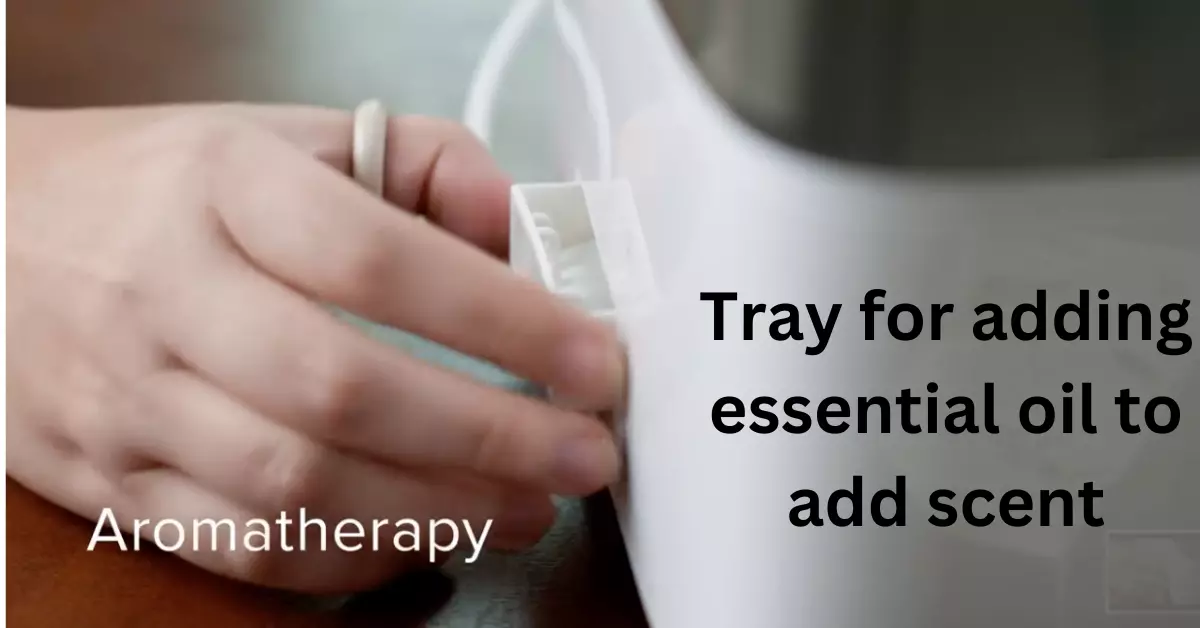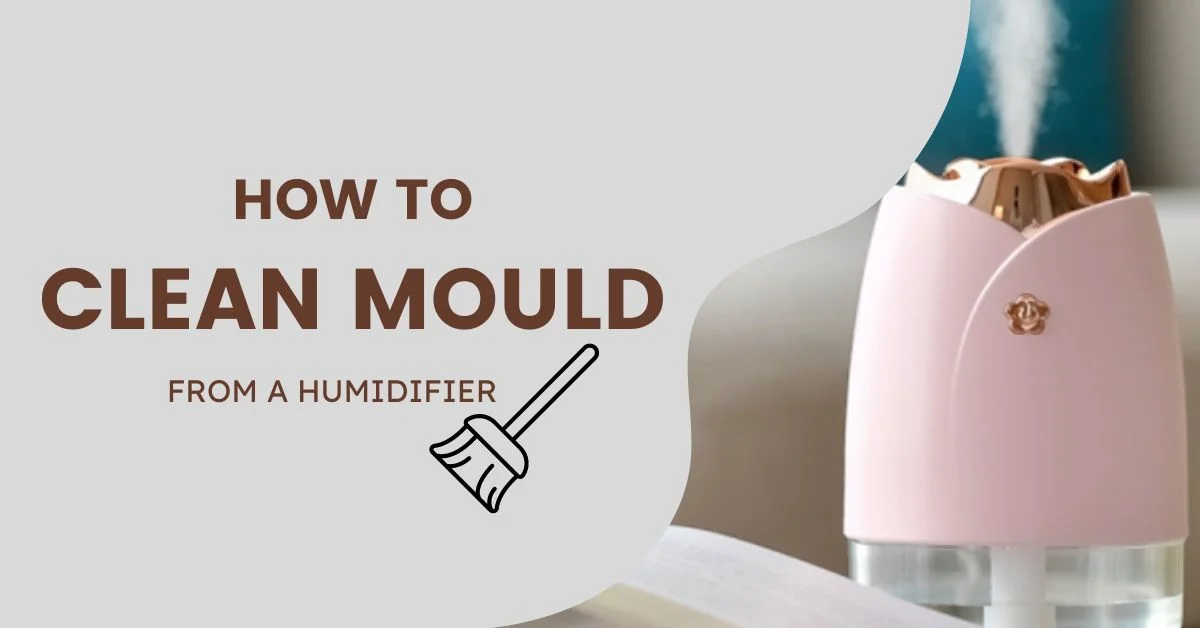You know, it’s always good to have a cozy and comfortable home, especially during the harsh winter months. But did you know that dry indoor air can make your skin and sinuses feel dry too? That’s where a cool- or warm-mist humidifier comes in handy. It adds moisture to your home’s air, making it healthier for you to live in. However, if you don’t clean your humidifier regularly, you might not be getting all its benefits. Therefore, I am here with a guide on how to clean a humidifier in simple steps.
How To Clean A Humidifier:
Hey there! If you’re reading this, chances are you’re looking to clean your humidifier. Good for you! Because I am here with an easy step to step guide. Just follow it to have a clean humidifier.

So, let’s get started!
- First, unplug your humidifier and empty any water from the tank.
- Next, you’ll want to wash the tank. A mixture of warm water and mild soap will do the trick. Use a soft cloth to scrub away any mineral buildup or bacteria.
- After washing, rinse the tank thoroughly with clean water and wipe it dry.
- While at it, take a minute to clean the base of the unit, including the surface and any vents, with a damp cloth. This will keep everything looking spick and span!
- You can use a mixture of 4: 1 water and vinegar for a deep clean.
- Let it soak for 30 minutes to an hour.
- Now rinse thoroughly with clean water and wipe dry.
- Finally, replace the tank and refill it with fresh water. Plug in your humidifier and turn it on to check if it’s working correctly.
- And that’s it! Your humidifier is clean from bacteria, and you can breathe fresh air.
How Often Should I Clean My Humidifier:
You want to ensure your humidifier is in top condition and that it’s not spreading any mold or bacteria, right? That’s why cleaning it regularly is so important.
Moreover, if you are using a humidifier for scenting purposes, alongside controlling humidity then it is a good idea to clean it regularly to get the maximum scenting output.
So, how often should you clean your humidifier? The general rule of thumb is at least once a week.
This frequency is fundamental if you use your humidifier frequently and live in an area with hard water, as mineral buildup can occur quickly.
However, if your humidifier isn’t working well or there is any discoloration in the tank, it’s a sign that it’s time for a cleaning. In those cases, don’t hesitate to clean it, even if it’s not been a week yet.
How To Clean Essential Oil Tray In Humidifier?

Some humidifier comes with an additional feature of aromatherapy and has dedicated trays for the purpose of adding essential oils. My absolute favorite is Leviot. Nevertheless, if you have one with a similar feature then this part is for you.
If you are someone like me who loves to use the best essential oils for aromatherapy and medical benefits, ten a regular clean would ensure that no leftovers of essential oils are left in the humidifier.
Here’s how you can do it in a few easy steps:
- First, remove the essential oil tray from the humidifier.
- Rinse it with warm water to remove any residue from the essential oils.
- You can use mild soap and a soft cloth to scrub the tray gently if there’s any stubborn residue.
- Vinegar spray can also work best to remove the oil buildup on the tray if you want to avoid soap.
- Rinse the tray thoroughly with clean water and let it air dry completely.
- Rinse it with warm water to remove any residue from the essential oils.
- You can use mild soap and a soft cloth to scrub the tray gently if there’s any stubborn residue.
- Vinegar spray can also work best to remove the oil buildup on the tray if you want to avoid soap. Rinse the tray thoroughly with clean water and let it air dry completely.
Some essential oils can damage certain materials. Therefore, It’s important to be mindful of the tray’s materials and the essential oils you use.
For example, if your tray is made of plastic, you may want to avoid using certain essential oils or only clean it with gentle soap and water. Thus, Cleaning the integral oil tray after each use is also a good idea. This will not only prevent buildup but also maintain longevity.
Tip: Using a Berger Lamp alongside a humidifier brings in the benefit of killing odorous bacteria alongside better air quality. Moreover, you can also use the best fragrances for your lampe berger if you do not have a humidifier with a scent tray.
How To Clean Mould Growth In Humidifier:
You’ve got some mold growth in your humidifier, eh? No problem, I’ve got just the thing to help you out!

Here’s what you need to do:
- Empty the water tank and unplug the humidifier.
- Mix 4 cup water and one cup 3% hydrogen peroxide in a bowl.
- Dip a soft cloth or sponge into the hydrogen peroxide solution and use it to scrub away the mold growth.
- Rinse the tank thoroughly with clean water to remove any residue from the hydrogen peroxide solution.
- Wipe the tank dry and refill it with fresh water.
- And voila! You’ve just defeated mold growth in your humidifier with hydrogen peroxide! If the mold growth is particularly stubborn, you can let the hydrogen peroxide solution soak in the tank for 30 minutes to an hour before scrubbing and rinsing.
Now, mold growth in humidifiers is like the boogeyman of indoor air quality. However, you can beat it back into oblivion with a bit of elbow grease (and hydrogen peroxide). This simple cleaning routine keeps your indoor air healthy and your humidifier functioning correctly.
How To Descale My Humidifier:
Hard water can create mineral buildup at the base of the humidifier tank. It can also clog up the humidifier filter and damage the tray.
Therefore, it’s critical to descale your humidifier monthly or bi-monthly. Descaling might sound harsh, but it’s a simple task.
You need to follow the cleaning steps like your standard cleaning steps. The only additional step is to soak up the tank or tray into the mixture of a 4:1 ratio of water and vinegar and leave it for a minimum of 20 minutes. Since vinegar is a potent cleaning agent, it removes all the lime buildup and flakes it up in the humidifier. And that’s it.
How Often Should I Replace Humidifier Filter:
It’s a bit like when to change the oil in your car. There’s no one-size-fits-all answer, as it depends on various factors, such as the frequency of use and the type of water used in your humidifier. However, here’s a general guideline to keep in mind:
Think of it like a friendly reminder from your humidifier filter. “Hey there, it’s me! Your trusty filter. I’ve been working hard to keep the air in your home moist and comfortable, but it’s about time we take a break. Let’s plan for a change, shall we?”
- Typically, replacing your humidifier filter every 1 to 2 months or as needed is recommended.
- If you use your humidifier frequently, you may need to replace the filter more often.
- If you notice that the water in your humidifier is not lasting as long as it used to, or if the mist output has decreased, it may be time to give your filter a fresh start.
So, my dear friend, let’s keep your home’s air fresh and healthy, and remember to give your filter a break now and then.
What Happens If I Don’t Clean My Humidifier:
Anything dirty or contaminated can quickly become the breeding ground for bacteria, viruses, and molds. These organisms are opportunistic pathogens and can cause severe disease if not taken care of. The same goes for a humidifier. If you don’t clean it regularly, it can result in the following:
- A neglected humidifier can become a breeding ground for harmful bacteria and mold, leading to potential health risks for you and your loved ones.
- Over time, mineral buildup from uncleaned humidifiers can clog the unit, reducing its effectiveness and causing it to use more energy.
- The unpleasant odors emitted from an uncleaned humidifier can quickly fill the air, ruining the ambiance of your home.
- If you ignore regular humidifier maintenance, it can break down, leaving you without the much-needed benefits of proper humidity levels in your home.
- Uncleaned humidifiers can emit white dust, which can accumulate on surfaces and cause respiratory issues, especially in those with pre-existing respiratory conditions.
- Neglecting to clean your humidifier can be costly, as repairs or replacements can be expensive, and the impact on your health and well-being is priceless.
Final Words:
Dirty humidifiers can harm your health, as they can breed bacteria and mold that contaminate the air you breathe. This can lead to respiratory issues and exacerbate existing health conditions. Moreover, mineral buildup and reduced efficiency can lead to higher electricity bills and a shorter lifespan for your humidifier.
To avoid these negative consequences, cleaning your humidifier regularly is essential. Take the time to follow the manufacturer’s instructions and ensure that all parts are thoroughly cleaned and disinfected. By doing so, you can protect your health, save money, and extend the lifespan of your machine.
So, if you haven’t cleaned your humidifier recently, take action now! Your health and comfort depend on it. Don’t let harmful bacteria and mold contaminate the air you breathe. Clean your humidifier regularly and enjoy the benefits of fresh, clean air in your home.

A dedicated freelance writer for OppositeAttracts.com, Areeba has a unique approach to experiencing and describing fragrances. Her writings offer personal insights into the world of scents, guiding readers on a sensory journey.
